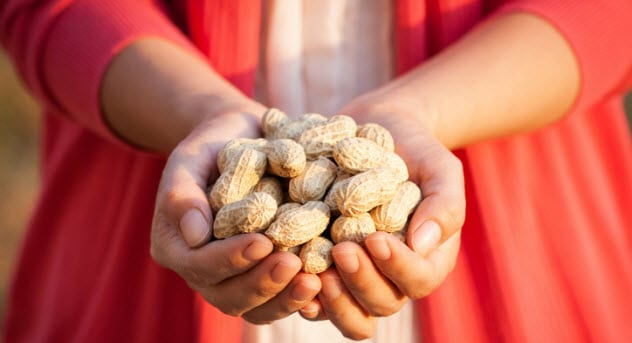Some of the fruits, nuts, and vegetables we eat today are man-made hybrids. They were created through selective breeding, a process whereby only plants with favorable traits are replanted. In rare instances, insects were responsible for creating the hybrid plants through cross-pollination.
1. Strawberry.
The modern strawberry is a man-made hybrid of the smaller wild strawberry, which has a shorter shelf life as well as a better flavor and aroma. The modern strawberry first appeared in France in the 18th century. However, the hybridization program began much earlier. Antoine Nicolas Duchesne created the modern strawberry on July 6, 1764, when he crossed a male Fragaria moschata with a female Fragaria chiloensis from Chile.
2. Carrots.
Carrots have not always been orange. Natural carrots were either white or purple and probably inedible. The orange carrot is a hybrid of the yellow carrot, which is a hybrid of the white carrot. The earliest-known ancestor of the modern consumable carrot appeared in Persia in the 10th century. The Persians selectively bred the carrots with the biggest roots to create bigger roots and, ultimately, a big single root. As the selective breeding continued, the carrots mutated from white or purple to yellow and finally orange. Selective breeding of carrots continued until modern times to improve their flavor and color.
3. Orange.
Many varieties of orange exist today. However, every variety traces its roots to the man-made hybrid created by crossing the pomelo with the mandarin. The pomelo is almost as bitter as the grapefruit, while the mandarin is sweet. The mandarin has an orange color, and some people misidentify it as a variety of the orange. Wrong! The mandarin is an ancestor of the orange.
4. Grapefruit.
The grapefruit first appeared after 1693 when a Captain Shaddock transported some pomelo seeds to the West Indies and planted them close to some orange trees. The pomelo and orange later cross-pollinated to create the grapefruit. However, the grapefruit was still unknown outside the Caribbean. Europeans only learned of this citrus fruit in 1750 when Reverend Griffith Hughes encountered one. The grapefruit reached the United States in 1823 but was mistaken for the pomelo. It was only determined to be a distinct fruit in 1837.
5. Cabbage, Broccoli, Cauliflower, Kale, And More.
Cabbage, broccoli, cauliflower, kale, brussels sprouts, collard greens, kohlrabi, and several closely related vegetables originated from the same plant species, Brassica oleracea. Its wild form is known as wild mustard and still exists today. About 2,500 years ago, wild mustard only grew in some parts of Europe and the Mediterranean. Wild mustard selected for its bigger stems became kohlrabi, the ones with small heads became brussels sprouts, and the ones with big flowers became broccoli and cauliflower.
6. Peanut.
The modern peanut is a hybrid of two older types of peanuts, the Arachis ipaensis and the Arachis duranensis. The Arachis duranensis grows in the Andean valleys between Bolivia and Argentina, while the Arachis ipaensis grows inside Bolivia. Researchers discovered that the earliest settlers in South America took the Arachis duranensis from the Andean valleys as they migrated into today’s Bolivia, the bees then cross-pollinated both peanuts.






